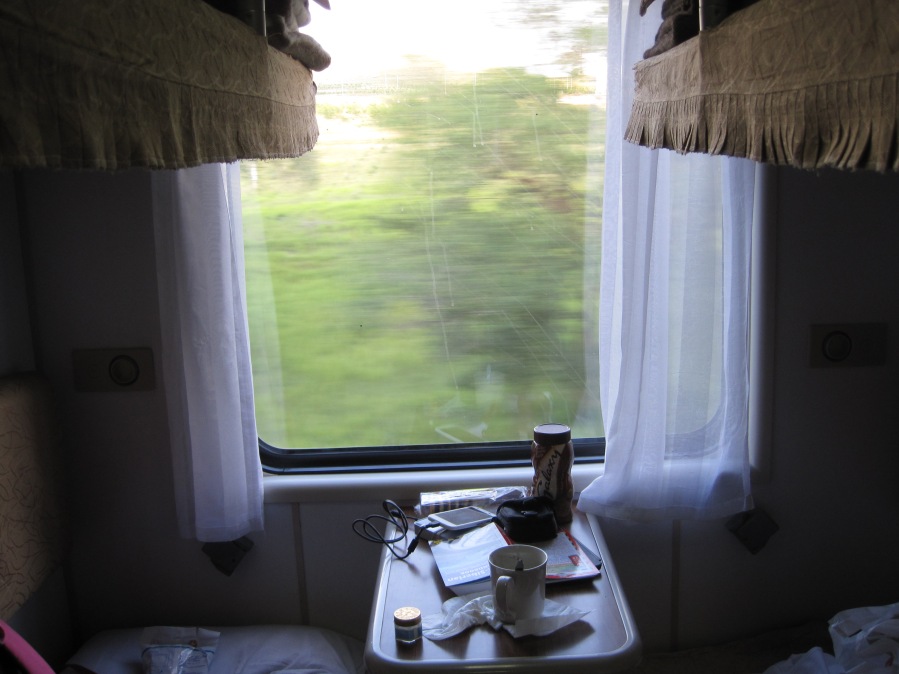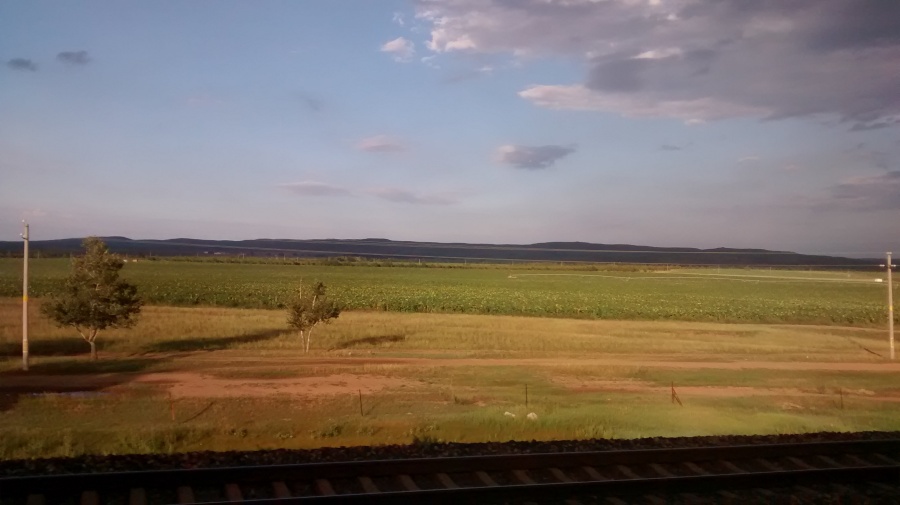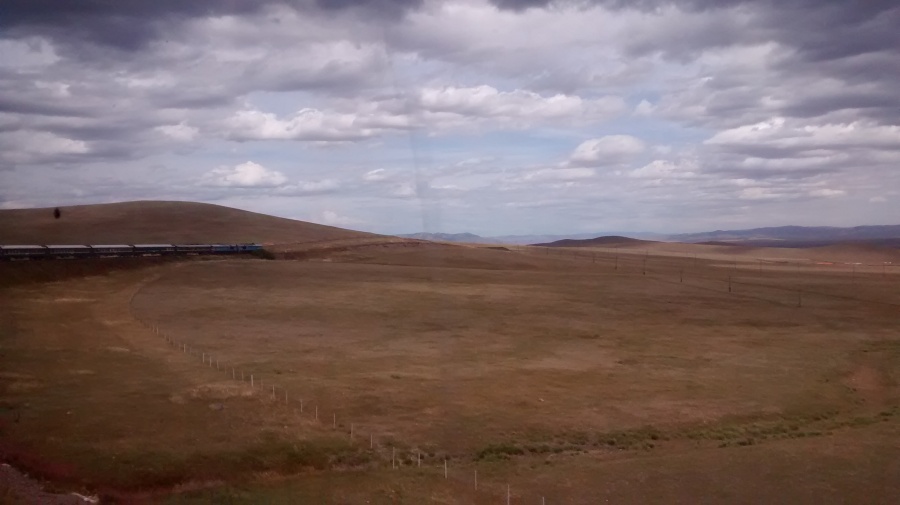While the most Trans-Siberian Railway has to be one of the most famous in the world, the Trans-Mongolian and Trans-Manchurian routes (which each join the Trans-Siberian somewhere in the middle of Siberia) link Russia to China. Rather than flying directly back to the UK, I have decided to take the train from Beijing through Mongolia and onto Moscow, an epic 7621km journey which would usually take around 6 days non-stop. In order to break up the journey, I’ll be visiting Ulaanbaatar (the capital of Mongolia) and Irkutsk (to see Lake Baikal) en route, as well as adding some time in St. Petersburg at the end of the trip. Overall, I will be spending four weeks travelling by train and exploring Mongolia and Russia.
The first leg of my journey was the 003 train from Beijing to Ulaanbaatar, for which I had booked a second class cabin for the 27 hour trip. I was pleasantly surprised to find I had the whole cabin to myself – usually on Chinese trains they will fill up the cabins, but I guess it wasn’t fully booked.

The route passes through some very scenic areas of China, at one point even crossing through the great wall. The landscape gradually changed from the mountainous areas around Beijing to farmland and rolling hills nearer the border with Mongolia.

After spending several hours staring out the window admiring the scenery, I headed to the restaurant car for an early dinner. I have to admit, the food was pretty standard train food (I ordered “pork with fungus and veg” but basically just got rice and some over-boiled cabbage) but it was a good opportunity to meet other people on the train. In particular, I bumped into a Taiwanese guy who had just spend a month backpacking around China – we had a great couple of hours sharing travel stories.
By far the most exciting part of the journey however was the changing of the bogies at the border (at a small town called Erlian). The tracks are different widths in China and Mongolia, and so the wheels must be replaced with a different set. Initially, everyone was kicked off the train for the border crossing procedure and told to hang around the station there – however, having got through the passport checking queue in record time (as well as managing to buy some snacks in the small supermarket), I was able to persuade the guard to let me back on the train to observe.
The train was driven into a giant workshop and the carriages all detached and separated. At this point, super strong lifts raised them off the ground (with me inside!) and the Chinese bogies wheeled away, being replaced with a new set suitable for the tracks in Mongolia. The carriages were then carefully lowered down onto the wheels, with mechanics rushing around to ensure they were properly connected and securing the bolts. It really was incredible to watch – not only to find out about the process, but also to observe the well-practiced efficiency at which it was carried out.

After this (which finished considerably past midnight) I headed back to my cabin for a well-deserved sleep!
The next morning, I woke to incredible views of the Gobi desert – even though the train doesn’t even pass through its core I was amazed by its sheer emptiness. The desert gradually turned into rather barren looking grassland, with the odd yurt or yak hinting at life.
Eventually, at around 14:30, the train arrived in Ulaanbaatar. My hostel had very kindly offered to pick me up from the train station, so I headed there straight away to drop off bags. Since there was still plenty of time left in the day, I made my way into town to visit the Lama Temple Museum and Chinggis Khan square – more about those in upcoming blog posts.
what a magnificent trip – I wished I did it when I lived in Beijing. I had heard of the changing of the bogies but great to read your post and see your photos from the train.
LikeLiked by 1 person
Thanks! Yes, the changing of the bogies was absolutely fascinating to watch! You could still do a trip back to Beijing to do it 😉
LikeLiked by 1 person
oh wow!! This is the trip I want to do someday or 1-2 years from now, riding trans siberian but from China – Mongol – Russia
thank you for the preview 😀
LikeLiked by 1 person
Do it! I had such an amazing trip 🙂
LikeLike
yes! I have to save up first hahaha.
LikeLiked by 1 person